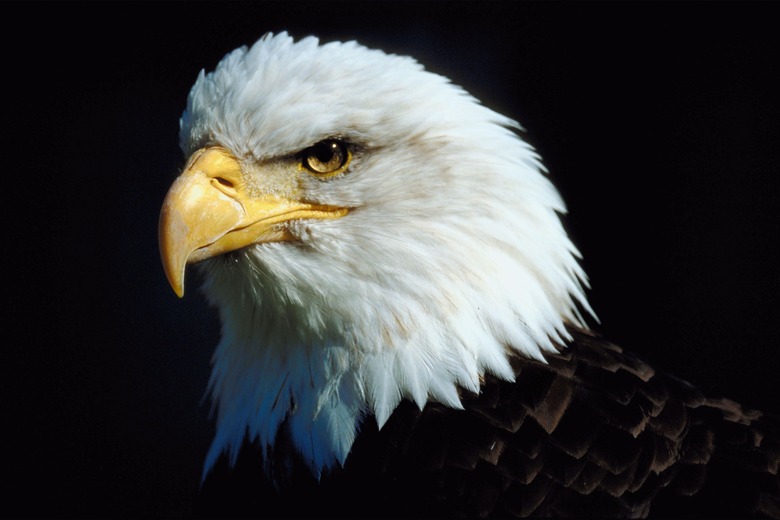What Are Predators, Omnivores And Herbivores?
Predators are organisms that kill and consume other organisms for food. Carnivores, omnivores and herbivores are all types of predators. These terms are used to describe what type of food an animal eats and where they are in the food chain. Carnivores eat animals, omnivores eat both plants and animals, and herbivores only eat plants.
Animal Food Chain
Animal Food Chain
Food chains and food webs both describe how energy moves around an ecosystem through food. Food webs are more realistic as organisms within an ecosystem have complex interactions, however, food chains are a great place to begin understanding energy transfer.
A simple food chain starts with organisms that photosynthesize, called producers. Examples of producers are plants, algae and some bacteria. These producers use cellular respiration to turn light energy into chemical energy available as glucose.
Primary consumers (herbivores and omnivores) obtain their energy by eating the producers. Secondary consumers, (omnivores and carnivores) derive their energy from eating the primary consumers. Tertiary consumers eat the primary and secondary consumers.
Finally, energy in an ecosystem cycles back around to decomposers, who consume dead producers and consumers, transferring their energy back to the earth as nutrients to be used by producers to support their photosynthetic processes.
Types of Predators
Types of Predators
Predators are the consumers who obtain their required energy by eating other organisms. Carnivores, omnivores and herbivores are all predators who capture and feed on their prey. This contrasts with parasites that live on and feed off of their host.
Apex predators such as humans (Homo sapiens), tigers (Panthera tigris), lions (Panthera leo), crocodiles (Crocodylinae), sharks (Selachimorpha spp.) and orca whales (Orcinus orca) are at the top of their food chain (or food web). They eat organisms from the lower levels of the food chain, but naturally, nothing or very few animals kill and eat them.
Carnivores Eat Other Animals
Carnivores Eat Other Animals
Carnivores primarily get their food by eating other animals. For example, tigers feed on animals such as buffalo, deer, pigs and antelope. In fact, all cats in the Felidae family are obligate carnivores. This means that they exclusively need meat to survive as they cannot properly digest plant material for nutrients. Furthermore, not all carnivores hunt and kill their prey – some scavenge meat of animals that were killed by another carnivore or that died naturally, like vultures from the families Accipitridae and Cathartidae.
To complicate the matter further, there is also an order of mammals called Carnivora. Not all carnivores fit into the order Carnivora and not all members of the Carnivora order are carnivores. For example, pandas (Ailuropoda melanoleuca) are in the order Carnivora as they share a common ancestry with other bears, cats, mustelids and even seals. However, their evolutionary path has led them to be primarily herbivores living off bamboo and the occasional insect that gets in their way. There are also carnivorous mammals that do not belong in the order Carnivora, such as dolphins, which belong to the order Artiodactyla.
Omnivores Eat A Variety
Omnivores Eat A Variety
Omnivores derive their energy from both animals, plants and fungi sources. Humans (H. sapiens) are a great example of an omnivore as people can obtain sufficient nutrients from a wide variety of plant and animal sources. Omnivores may eat a variety of food throughout the year or focus on what is available seasonally.
For example, grizzly bears (Ursus arctos horribilis) in Yellowstone National Park scavenge on wolf-killed animals, eat fresh plant shoots and uncover lost squirrel nut caches in spring. In summer, they eat grasses, berries and predate on elk calves. Then during fall, they eat a lot of whitebark pine nuts and roots before winter hibernation begins.
Herbivores Eat Plants
Herbivores Eat Plants
Herbivores mostly eat plant material, including leaves, fruits, seeds, bark and roots. Herbivores spend much of their day foraging for food to get their required daily energy intake by either grazing or browsing. Grazers spend their day eating grass while browsers eat a wider variety of leaves. In Kruger National Park in the African savanna, zebra (Equus spp.) are classed as grazers while giraffes (Giraffa spp.) are considered browsers.
Some animals eat all parts of a plant, like black rhinoceroses (Diceros bicornis) while other animals specialize. Frugivores specialize in eating fruits and their seeds, like the Sumatran orangutan (Pongo abelii). Frugivores often play important roles in seed dispersal for plants. Folivores mostly eat the leaves, or the foliage of a plant, like koalas (Phascolarctos cinereus), which eat eucalyptus leaves. Animals whose diet specializes in wood, like termites, are called xylophages.
References
- National Geographic: Scavenger
- National Geographic: Carnivore
- Michigan State University Extension: Natural Enemies: Predators & Parasites
- Siyabona Africa: Kruger National Park Wildlife: Grazers and Browsers
- National Park Service: Food Habits of Grizzly Bears and Black Bears in the Yellowstone Ecoystem
- World Wildlife Fund: Sumatran Orangutan
- Australian Museum: Herbivory: Eating Plants
- National Geographic Kids: 10 Terrific Tiger Facts
Cite This Article
MLA
Jerrett, Adrianne. "What Are Predators, Omnivores And Herbivores?" sciencing.com, https://www.sciencing.com/predators-omnivores-herbivores-8749551/. 30 September 2021.
APA
Jerrett, Adrianne. (2021, September 30). What Are Predators, Omnivores And Herbivores?. sciencing.com. Retrieved from https://www.sciencing.com/predators-omnivores-herbivores-8749551/
Chicago
Jerrett, Adrianne. What Are Predators, Omnivores And Herbivores? last modified August 30, 2022. https://www.sciencing.com/predators-omnivores-herbivores-8749551/
